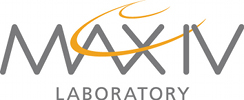Inelastic Scattering of Photons & Neutrons
Wednesday 25 September
Room: MEGA
With MAX IV at our doorstep and the ESS in sight, it is about time to explore the science shared between the two facilities. Inelastic scattering, in particular at solid state systems, is a field where Neutrons and Photons have lately complemented and competed with each other. MAX IV will provide unique possibilities for ultra-high resolution inelastic scattering of soft X-ray photons in an energy range between 30 and ca. 1500eV at its VERITAS and SPECIES beamlines. With a resolution in the range of few tens of millivolts, soft X-ray resonant inelastic scattering becomes attractive for a user community that has been traditionally more costumed to hard X-rays and neutrons. In this workshop, we would like the different communities to meet and showcase the upcoming opportunities for inelastic scattering of Photons and Neutrons in Lund.
| 09:00 - 09:50 |
Breaking the Waves - neutrons and the quasi-particle zoo Henrik M. Rønnow, École Polytechnique Fédérale de Lausanne X-ray and neutron spectroscopy provide unique insight into the complex nature of excitations of fundamental systems from the simple Heisenberg chain to doped cuprate superconductors and spin-orbit dominated iridates. I shall present recent data combined with new theoretical understanding of spinons in both 1D and 1D Heisenberg systems, a unified Hubbard model for cuprates and a surprising gapped state in bilayered iridates. |
| 09:50 – 10:40 |
Inelastic x-ray scattering - experiences in the hard x-ray regime Simo Huotari, University of Helsinki, Finland Inelastic x-ray scattering, both resonant and nonresonant, have developed into mature tools in various fields of science. Some of the latest results and ideas on using it for three-dimensional imaging, and studying various complex and less complex materials will be presented. |
| 10:40 – 11:10 | Coffee |
| 11:10 – 11:30 |
Chopper Spectroscopy at the ESS Pascale Deen, ESS AB Abstract: Direct geometry chopper spectroscopy is a work horse technique that has, with the onset of large detector arrays and position sensitive detectors, provided a new paradigm for neutron scattering techniques. The European Spallation Source (ESS) will provide the brightest peak neutron flux of a research facility and as such direct geometry spectrometers will be an integral part of the ESS instrument suite. In contrast to the short pulsed spallation sources (J-Pac/SNS/ISIS), the long pulsed nature of the ESS provides new opportunities for spectroscopic techniques. In this talk I shall give an overview of some of the instrument concepts under consideration with a focus on the design of a versatile, optimal resolution chopper spectrometer developed in-house. |
| 11:30 – 11:50 |
The new SPECIES RIXS beamline at MAX II Conny Såthe, MAX IV Laboratory The SPECIES beamline is currently under construction at MAX II and is prepared to be moved to MAX IV after 2015. From 2014 on, this beamline will fill a niche for soft X-ray resonant inelastic scattering between 30eV and 150eV with unprecedented resolution. Sample environments will be provided for solid state samples as well as for gases and liquids under atmospheric conditions. In addition, user specific sample environments can be attached to the vacuum system of the spectrometer. |


